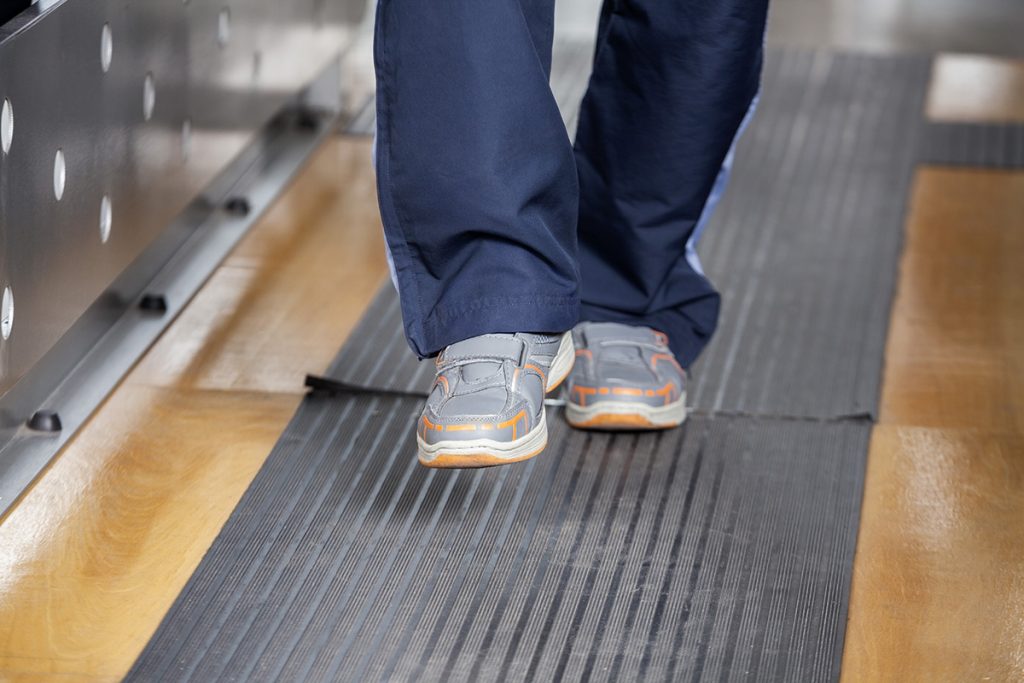The Best Assessment and Training Tool of the Medical Fitness Practitioner

Assessing and training clients is challenging but skilled observation can give you important clues about your clients’ condition and readiness—and they don’t need to say a thing! Many trainers, and even therapists and doctors, are missing one of the most valuable assessment tools and training modalities they have at their disposal: the client’s gait. With a little instruction and practical advice, you too can learn to use gait to see into your client’s biomechanics, structure, brain function and even emotional state, in an instant!
My walk into using gait
By the time I entered my doctoral program I already had 10+ years of training and corrective exercise experience and I also had the benefit of having taken Active Release Techniques’ full body soft tissue and biomechanics certifications. As a research assistant in the school’s biomechanics laboratory, I assessed hundreds of subjects, mapping dozens of points on their bodies and painstakingly tracking every point through 120 frames of video/second. Using the best 3D computer imaging and modeling available, the result was 3D skeletons of dots and lines that allowed us to map and measure every joint from the foot to the wrist. The work was amazing and enlightening, giving me a huge appreciation of gait.
Reliability of assessment techniques
One of the studies I was involved in used the 3D tracking system to detect limitations of lumbosacral and sacroiliac motion in participants. Then practitioners, using a variety of assessment techniques, “diagnosed” the participants’ movement disorders. The finding was astounding! There was little reliability between examiners. However, when these same examiners were permitted visual assessment of the participants’ gait, the examiners’ inter-agreement increased. My take-away: watching gait is powerful and should always be my first assessment technique.
In the clinic and the training room
Gait assessment is ideally suited for both training and clinical environments. Even before we speak to an individual, we can assess posture, movement, stability, balance, strength, structure, visual function, coordination, and even attitude.
Consider the delicately balanced, yet resilient and highly integrated nervous system. By observing a client walking (a largely autonomous neuromuscular activity), we can see the “systematic parts” coordinating to make up the act, including, visual, vestibular, proprioception. It also helps us see the interplay of mobility and structure. Within 30 seconds, we can make a list of areas of concern for both deeper assessment as well as evaluate the client’s readiness to train.
At NeuroAthlete, all of our practitioners use gait assessment throughout clients’ visits. Whenever possible, we observe the client walking into the facility and frequent purposeful assessments during their training. We use gait checks between procedures, drills, and exercises to see if we are still getting positive effect or if we have passed “effective minimum dose” for the client. Often, the gait check is for us, as practitioners, to see what has changed, but frequently the client will detect changes in their own gait — both positive and negative. This makes our interactions extremely dynamic and brings the client into a partnership where they are becoming more self-aware and reflexively more compliant with the training or treatment.
Dr. Grove Higgins is a chiropractor, rehabilitationist, soft tissue injury expert, researcher, anatomy instructor, biomechanist, human performance expert, speaker, and corporate health consultant. In 2015, Dr. Higgins cofounded Neuroathlete with Coach Patrick Marques (LTC, US Army Ret.) and Peter Hoversten. Neuroathlete’s goal is to more broadly deliver neurological training to a global audience.

